
Calico is a heavy plain-woven textile made from unbleached, and often not fully processed, cotton. It may also contain unseparated husk parts. The fabric is far coarser than muslin, but less coarse and thick than canvas or denim. However, it is still very cheap owing to its unfinished and undyed appearance.

Stained glass is coloured glass as a material or works created from it. Throughout its thousand-year history, the term has been applied almost exclusively to the windows of churches and other significant religious buildings. Although traditionally made in flat panels and used as windows, the creations of modern stained glass artists also include three-dimensional structures and sculpture. Modern vernacular usage has often extended the term "stained glass" to include domestic lead light and objets d'art created from foil glasswork exemplified in the famous lamps of Louis Comfort Tiffany.
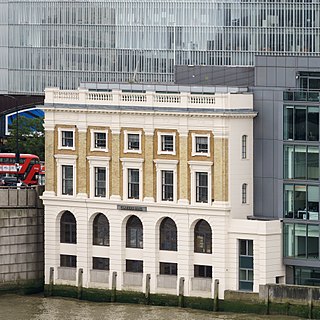
The Worshipful Company of Glaziers and Painters of Glass is one of the livery companies of the City of London. The Guild of Glaziers, or makers of Glass, the company's forerunner, existed as early as the fourteenth century. It received a royal charter of incorporation in 1638. It is no longer a trade association of glass craftsmen, instead existing, along with a majority of livery companies, as a charitable body.
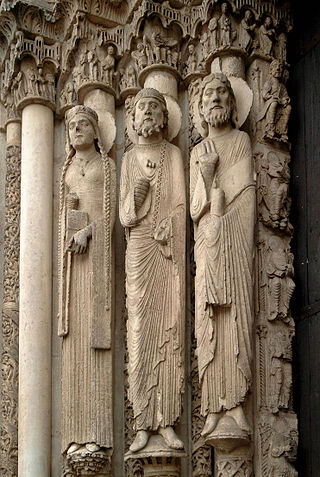
Gothic art was a style of medieval art that developed in Northern France out of Romanesque art in the 12th century AD, led by the concurrent development of Gothic architecture. It spread to all of Western Europe, and much of Northern, Southern and Central Europe, never quite effacing more classical styles in Italy. In the late 14th century, the sophisticated court style of International Gothic developed, which continued to evolve until the late 15th century. In many areas, especially Germany, Late Gothic art continued well into the 16th century, before being subsumed into Renaissance art. Primary media in the Gothic period included sculpture, panel painting, stained glass, fresco and illuminated manuscripts. The easily recognizable shifts in architecture from Romanesque to Gothic, and Gothic to Renaissance styles, are typically used to define the periods in art in all media, although in many ways figurative art developed at a different pace.
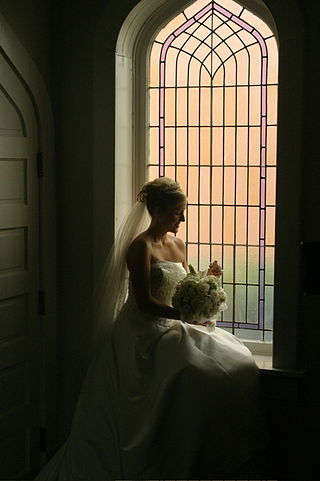
Cathedral glass is the name given commercially to monochromatic sheet glass. It is thin by comparison with slab glass, may be coloured, and is textured on one side.
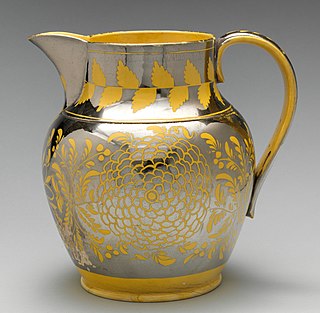
Lustreware or lusterware is a type of pottery or porcelain with a metallic glaze that gives the effect of iridescence. It is produced by metallic oxides in an overglaze finish, which is given a second firing at a lower temperature in a "muffle kiln", or a reduction kiln, excluding oxygen.

Favrile glass is a type of iridescent art glass developed by Louis Comfort Tiffany. He patented this process in 1894 and first produced the glass for manufacture in 1896 in Queens, New York. It differs from most iridescent glasses because the color is ingrained in the glass itself, as well as having distinctive coloring. Tiffany won a grand prize at the 1900 Paris Exposition for his Favrile glass.

Chintz is a woodblock printed, painted, stained or glazed calico textile that originated in Golconda in the 16th century. The cloth is printed with designs featuring flowers and other patterns in different colours, typically on a light, plain background.
Linens are fabric household goods intended for daily use, such as bedding, tablecloths, and towels. "Linens" may also refer to church linens, meaning the altar cloths used in church.
Bakewell Glass is nineteenth-century glassware from Pittsburgh, Pennsylvania, produced by a company founded by Benjamin Bakewell. Bakewell's company can be found under the names ThePittsburgh Glass Manufactory, Bakewell & Page and, Bakewell, Pears & Co. Bakewell glass built a reputation of being both luxurious and utilitarian during the 80 years it was in business.
The firm of James Powell and Sons, also known as Whitefriars Glass, were London-based English glassmakers, leadlighters and stained-glass window manufacturers. As Whitefriars Glass, the company existed from the 17th century, but became well known as a result of the 19th-century Gothic Revival and the demand for stained glass windows.

A chinaman is a dealer in porcelain and chinaware, especially in 18th-century London, where this was a recognised trade; a "toyman" dealt additionally in fashionable trifles, such as snuffboxes. Chinamen bought large quantities of Chinese export porcelain and Japanese export porcelain landed by the East India Company, who held auctions twice a year in London. The traders then distributed chinaware throughout England.
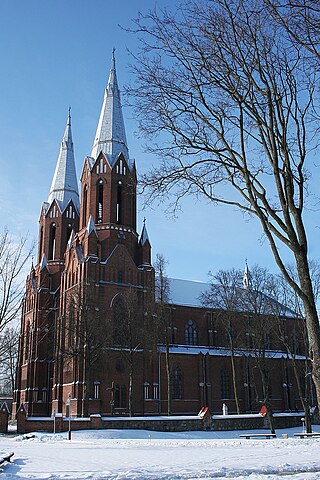
Marija Anortė Mackelaitė, better known as Anortė Mackelaitė, is a Lithuanian stained glass artist. Along with stained-glass artists such as Stasys Ušinskas, Algimantas Stoškus, Kazimieras Morkūnas, Antanas Garbuskas, Filomena Ušinskaitė, Konstantinas Šatūnas and Bronius Bružas, she has been cited as one of the leading artists in this field in Lithuania and the Baltic States. Her best-known work is the brightly colored stained-glass windows which she contributed to Anykščiai Church, the tallest church in Lithuania.

Medieval stained glass is the coloured and painted glass of medieval Europe from the 10th century to the 16th century. For much of this period stained glass windows were the major pictorial art form, particularly in northern France, Germany and England, where windows tended to be larger than in southern Europe. In some countries, such as Sweden and England, only a small number of original stained windows has survived to this day.

William Willet was an American portrait painter, muralist, stained glass designer, studio owner and writer. An early proponent of the Gothic Revival and active in the "Early School" of American stained glass, he founded the Willet Stained Glass and Decorating Company, a stained glass studio, with his wife Anne Lee Willet, in protest against the opalescent pictorial windows which were the rage at the turn of the twentieth century.
Daniel Cottier (1838–1891) was a British artist and designer born in Anderston, Glasgow, Scotland. His work was said to be influenced by the writing of John Ruskin, the paintings of the Dante Gabriel Rossetti and the work of William Morris. He painted allegorical figures in the Pre-Raphaelite style of Rossetti and Sir Edward Burne-Jones. Cottier is considered to be an important influence on Louis Comfort Tiffany and also is credited with introducing the Aesthetic movement to America and Australia.

St Patrick's Church is a heritage-listed Roman Catholic church at 58 Morgan Street, Fortitude Valley, City of Brisbane, Queensland, Australia. It was designed by Andrea Giovanni Stombuco and built from 1880 to 1882 by John Arthur Manis O'Keefe. It was added to the Queensland Heritage Register on 21 October 1992.

Byzantine glass objects highly resembled their earlier Hellenistic counterparts during the fourth and early fifth centuries CE in both form and function. Over the course of the fifth century CE, Byzantine glass blowers, based mostly in the area of Syria and Palestine, developed a distinct Byzantine style. While glass vessels continued to serve as the primary vehicles for pouring and drinking liquid, glassware for lighting, currency and commodity weights, window panes, and glass tesserae for mosaics and enamels also surged in popularity. Following the Arab conquests of the seventh century CE, large quantities of glass were imported from the Levant, which continued to produce raw and manufactured glass. Scholars once believed that glassware was an expensive luxury good reserved for the upper strata of society, however, recent archaeological excavations have unearthed a considerable quantity of unadorned glassware intended for lower-class residents.
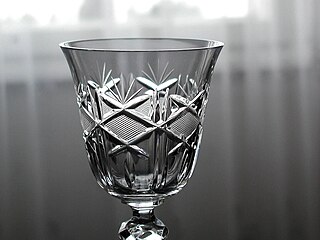
Cut glass or cut-glass is a technique and a style of decorating glass. For some time the style has often been produced by other techniques such as the use of moulding, but the original technique of cutting glass on an abrasive wheel is still used in luxury products. On glassware vessels, the style typically consists of furrowed faces at angles to each other in complicated patterns, while for lighting fixtures, the style consists of flat or curved facets on small hanging pieces, often all over. Historically, cut glass was shaped using "coldwork" techniques of grinding or drilling, applied as a secondary stage to a piece of glass made by conventional processes such as glassblowing.

Stained glass was first imported to Latin America during the 17th-18th century by Portuguese and Spanish settlers. For some countries, however, stained glass was imported much later.















